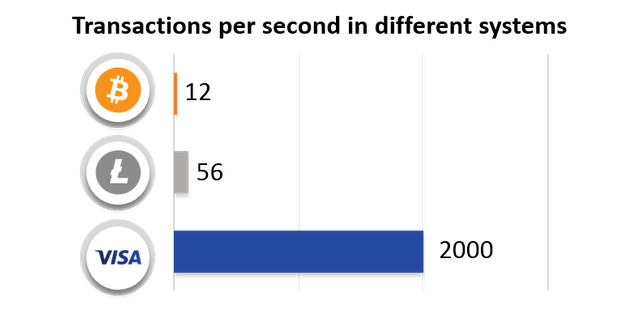So my first pieces were all about the basics of cryptoassets: structure, value proposition and technology. Now let‘s talk about something called Lightning network (LN). As this is my first article trying to go deeper down the crypto rabbit hole, I will try to keep it as simple as possible.
What is Lightning network?
Lighting network is a second layer protocol for Bitcoin network. The best way to imagine it is to think of other second layer protocols like Hyper Text Transfer Protocol (or HTTP) used on the Internet protocol stack (called the TCP/IP). We all know that HTTP allows us to build information (text, visual or any other item) on the internet, i.e. websites. LN is very similar form an architectural perspective. It is built on top of Bitcoin blockchain and uses Bitcoin blockchain mainly to ensure the security of transactions.

Why do we need LN?
In simple terms LN solves one of the largest cryptocurrency problems — scalability. Elizabeth Stark puts the scalability issue in a nutshell:
“Imagine if you have to send an email, you not only have to download every email you’d ever sent but any email that anybody had ever sent.”
Right now, in a public decentralized network (such as bitcoin) you need all network participants to validate every transaction. So when thousands of users are trying to validate transactions, the blockchain slows down and, as transactions pile up, it slows even more.

LN allows cheap and fast transactions. And not only for bitcoin! It can be built on top of any other blockchain enabling seamless transactions between crypto currencies. LN is the solution to scale the transaction per second capacity for public blockchains.
What is the current state of LN?
Lightning network whitepaper was introduced in January 14, 2016 and after two years of development, LN main net went live on March 15, 2018. Developers can now actually build Lightning applications (or Lapps) using multiple programming languages. And the development is rocketing: although it is live for less than 2 months, LN already has working applications.
- Android wallet
- Point-of-sale system
- Ecommerce back-end system
- And many others…
By the way, none of the above needed an ICO…
If we turn to fundamentals, there are two main characteristics that define the state of LN:
- Number of open channels;
- Sum of value available in the channels (in bitcoin).
Currently the network is booming — both metrics are growing at around 7% per day.
While some developers focus on centralized closed source code development, Lightning developers are constantly improving the network and fixing problems. And, remember it is all open source!
What is a day with Lightning network going to look like?
But now the real reason I wrote this article — people have to understand what are they going to experience by using Lapps on a daily basis. Lightning Labs developer Bryan Vu wrote an excellent piece on LN user experience.
Let me boil it down for you:
- Setting up and topping up a Lightning wallet will be virtually the same as any other wallet (download -> create wallet -> write down recovery code -> send crypto currency to the wallet);
- Synchronizing the blockchain directly on low-power devices (such as smartphones) is going to be possible by using a light-client protocol;
- Moving your funds from the wallet to the Lightning network is going to be automatic;
- Paying is going to be a question of which QR code to scan;
- And finally the transaction is going to be ~free and instant (even if the recipient does not have a lightning-enabled wallet).
The future of Lightning network looks promising and user experience is seamless. As crypto payment adoption is underway, the main question remains to be answered:
How to protect consumers and merchants from huge crypto currency price volatility?
While we are looking for the answer, let‘s not forget that some teams are already delivering results that are tangible, usable and require only bitcoin (or another crypto currency), not some token.
Stay tuned!
Special thanks to Elizabeth Stark, CEO and co-founder of Lightning Labs, and her team who made a wonderful job building the Lightning Network. Also thanks to other teams working on Lightning network implementation: Blockstream and ACINQ. It is great to see collaboration among teams — it brings results.
There is a great compression of useful resources about Lightning network. If you liked this article, please give it a clap, or two, or fifty! If you are hungry for knowledge in crypto space, feel free to contact me [email protected] — I would be happy to answer any questions and share content.
Congratulations @benasbiz! You received a personal award!
You can view your badges on your Steem Board and compare to others on the Steem Ranking
Vote for @Steemitboard as a witness to get one more award and increased upvotes!
Downvoting a post can decrease pending rewards and make it less visible. Common reasons:
Submit